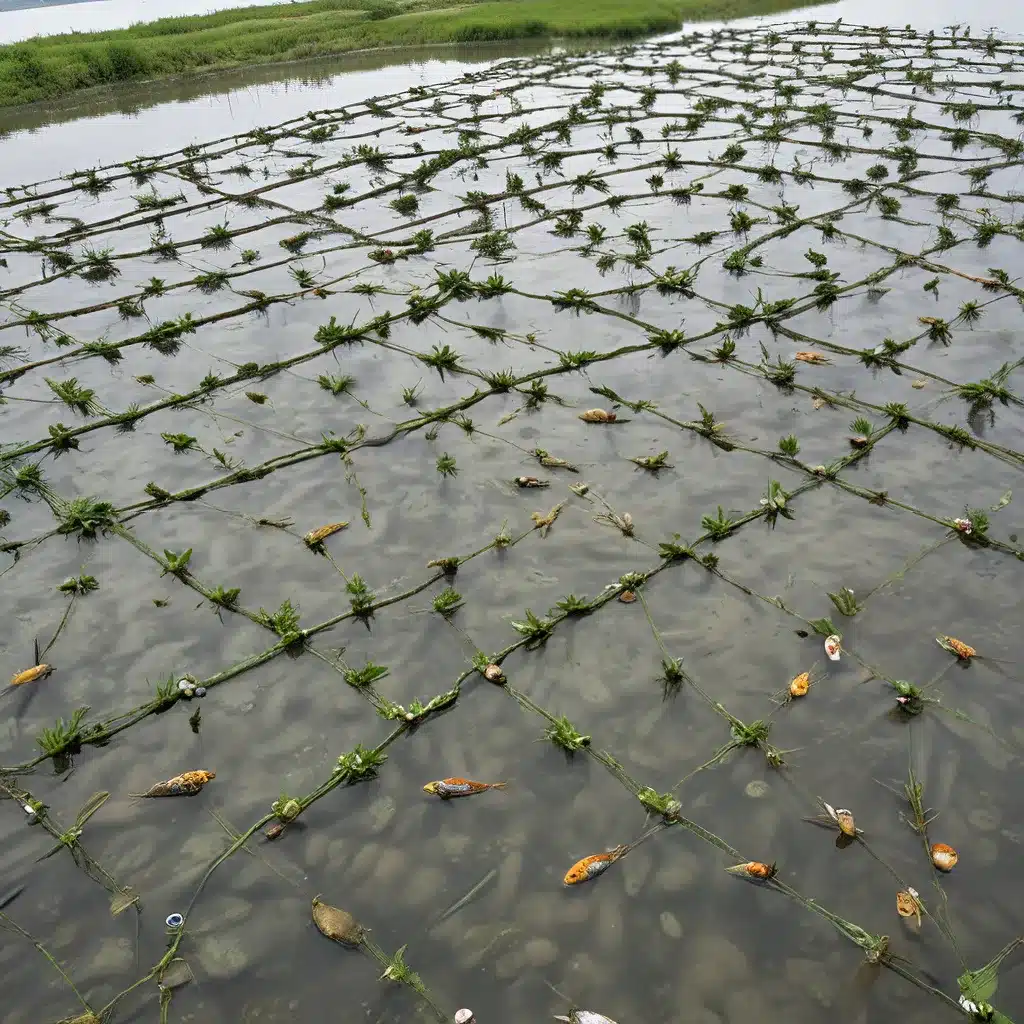
Transforming Aquaculture through Sensor Networks
The rise of sensor networks and Internet of Things (IoT) technologies has paved the way for a revolutionary shift in the aquaculture industry. Precision fish farming, enabled by advanced sensor networks, is poised to redefine sustainable and efficient aquatic food production.
In traditional aquaculture operations, monitoring and managing critical parameters such as water quality, fish health, and environmental conditions can be a labor-intensive and time-consuming task. Sensor networks, however, offer a transformative solution by providing real-time, comprehensive data that empowers fish farmers to make informed decisions and optimize their operations.
By deploying a network of interconnected sensors throughout aquaculture facilities, fish farmers can continuously monitor a wide range of parameters, including water temperature, pH, dissolved oxygen levels, and even the behavior and feeding patterns of their fish. This wealth of data, securely transmitted and analyzed through IoT platforms, allows for proactive interventions and data-driven decision-making.
Enhancing Water Quality and Fish Health
One of the primary benefits of sensor network-enabled precision aquaculture is the ability to maintain optimal water quality. Sensors strategically placed in the water can detect any fluctuations or imbalances in critical parameters, triggering automated adjustments or alerting the farmer to take immediate action. This real-time monitoring and quick response capabilities help prevent water quality-related issues, such as algal blooms, disease outbreaks, and poor oxygenation, which can be detrimental to fish health and overall productivity.
Moreover, sensor networks can be integrated with advanced analytics and machine learning algorithms to identify subtle changes in fish behavior or early indicators of health issues. By continuously monitoring factors like swimming patterns, feeding habits, and stress levels, farmers can proactively address any potential problems before they escalate, improving the overall well-being and performance of their fish stocks.
Optimizing Resource Efficiency and Sustainability
In addition to enhancing water quality and fish health, sensor networks in aquaculture also contribute to improved resource efficiency and sustainability. Automated monitoring of environmental conditions, such as water temperature, oxygen levels, and light exposure, allows farmers to fine-tune their operations and minimize resource consumption.
For example, sensor-based irrigation systems can optimize water usage by precisely delivering the right amount of water at the optimal times, reducing wastage and energy consumption. Similarly, integrated renewable energy solutions, such as solar-powered sensors and energy-efficient pumps, can lower the carbon footprint of aquaculture operations and promote sustainable practices.
Enhancing Farm Productivity and Profitability
By leveraging the power of sensor networks and IoT technologies, aquaculture farmers can enhance their farm productivity and profitability in several ways:
- Improved Feeding Optimization: Sensor-based monitoring of fish behavior and feeding patterns enables farmers to optimize their feeding schedules and portion sizes, reducing feed waste and maximizing growth rates.
- Enhanced Yield and Quality: Proactive monitoring and timely interventions based on sensor data can improve the overall health and growth of fish stocks, leading to higher yields and better-quality produce.
- Reduced Operating Costs: Automated systems and data-driven decision-making can lower labor costs, minimize the need for manual inspections, and optimize the use of resources like water, energy, and feed.
- Increased Operational Efficiency: Real-time insights and data-driven optimization of workflows and processes can enhance the overall efficiency of aquaculture operations, improving productivity and profitability.
Addressing Challenges and Improving Resilience
While the adoption of sensor networks in aquaculture offers numerous benefits, there are also challenges that must be addressed to ensure the long-term success of these technologies.
Cybersecurity is a critical concern, as IoT-enabled aquaculture systems can be vulnerable to cyber threats and data breaches. Robust security protocols, encryption, and access controls must be implemented to protect sensitive farm data and prevent unauthorized access.
Energy management is another key consideration, as sensor networks and IoT devices in remote aquaculture sites can be energy-intensive. Solar-powered sensors, energy-efficient hardware, and intelligent power management strategies can help mitigate the energy demands and ensure the long-term sustainability of these systems.
Furthermore, the scalability and resilience of sensor networks in aquaculture must be addressed, as large-scale deployments can be challenged by network connectivity issues, sensor failures, and environmental factors. Redundancy, fault tolerance, and edge computing capabilities can enhance the reliability and robustness of these systems, ensuring the continuity of critical monitoring and control functions.
The Future of Precision Aquaculture
As the aquaculture industry continues to evolve, the integration of sensor networks and IoT technologies will play an increasingly crucial role in driving sustainable, efficient, and profitable fish farming practices.
By leveraging the power of data-driven insights and automated monitoring, aquaculture operators can optimize their operations, enhance their environmental footprint, and meet the growing global demand for aquatic food products.
As sensor network technologies advance and become more affordable, the adoption of precision aquaculture is poised to accelerate, transforming the industry and paving the way for a more sustainable and productive future in fish farming.